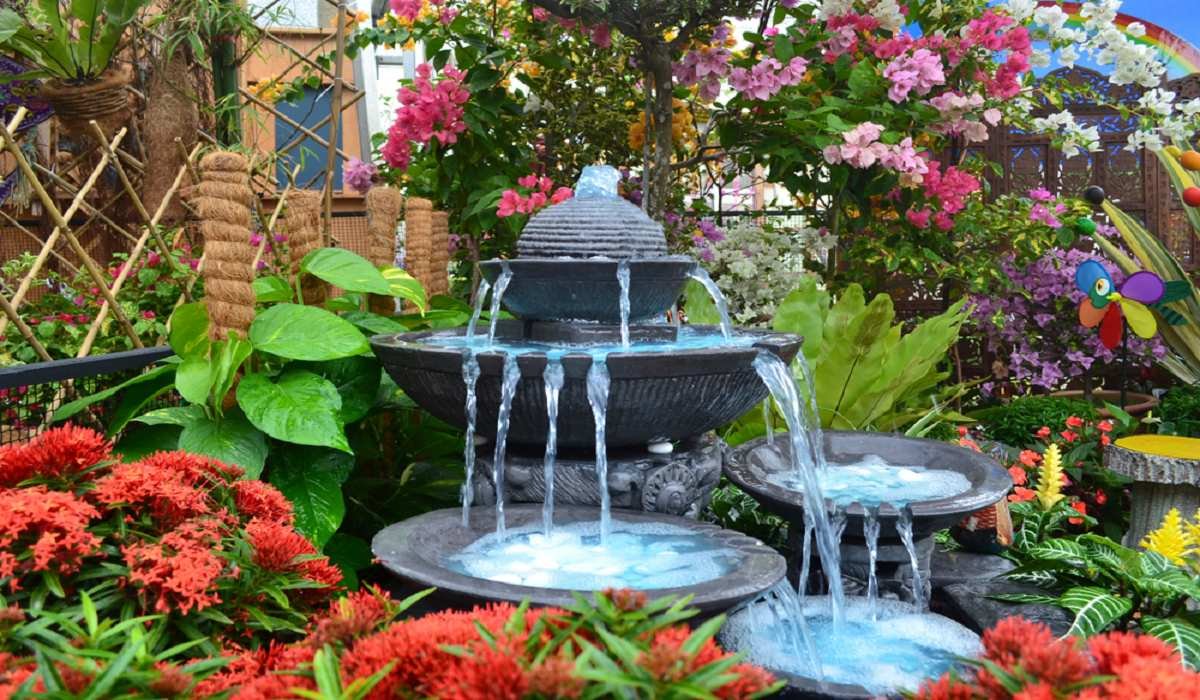Outdoor fountains have graced courtyards, gardens, and public plazas for centuries, admired for their beauty, tranquility, and symbolic charm. Today, outdoor fountain design remains a powerful tool in landscape architecture, adding sophistication and sensory appeal to residential and commercial spaces alike. Whether minimalist or ornate, a well-designed outdoor fountain serves as both a focal point and a functional element—inviting relaxation, improving air quality, and enhancing aesthetic harmony.
As trends in outdoor living continue to evolve, more homeowners, designers, and property developers are turning to custom fountain installations to create memorable, serene environments.
Why Choose an Outdoor Fountain?
An outdoor fountain is more than a decorative water feature; it transforms an ordinary outdoor space into a peaceful retreat or a dynamic gathering area. Key benefits include:
- Visual Impact: Fountains command attention and instantly elevate the design of any landscape.
- Auditory Calm: The gentle sound of running water creates a soothing ambiance that masks noise pollution.
- Cooling Effect: Fountains naturally reduce the surrounding temperature, making them ideal for hot climates.
- Wildlife Attraction: They provide water sources for birds, butterflies, and beneficial insects.
- Property Value Boost: A thoughtfully designed fountain enhances curb appeal and increases real estate value.

Elements of Exceptional Outdoor Fountain Design
Designing an outdoor fountain requires careful consideration of multiple factors to ensure it fits seamlessly into the space while serving its intended purpose.
1. Style and Theme
The fountain’s design should match the architectural style of the home or building. Classic tiered fountains work well in Mediterranean or colonial-style settings, while sleek, geometric designs suit modern and minimalist landscapes. Rustic stone fountains blend beautifully with natural or woodland gardens.
2. Size and Proportion
Scale matters. A large, multi-tiered fountain may overpower a small garden, while a tiny wall-mounted spout could be underwhelming in a spacious courtyard. The fountain should be proportionate to its surroundings, with ample room for viewing and circulation.
3. Material Selection
Popular materials for outdoor fountains include:
- Concrete: Durable and versatile, suitable for both traditional and modern designs.
- Stone: Timeless and natural, perfect for rustic or classical aesthetics.
- Metal (bronze, copper, stainless steel): Offers a contemporary or artistic touch.
- Ceramic or Mosaic: Adds color and intricate detailing.
Weather resistance and maintenance requirements should also influence material choice.
4. Water Movement
The movement of water can be subtle or dramatic. Consider the mood you want to create:
- Cascading tiers for elegance and rhythm
- Bubbling urns for a gentle, meditative sound
- Interactive jets for playfulness or modern flair
- Reflective pools for a calm, mirror-like effect
Pump strength, flow rate, and fountain head design all contribute to the type of water display achieved.
5. Lighting Integration
Strategic lighting extends the beauty of the fountain into the evening hours. Submersible LED lights, uplights, and spotlights can highlight water movement and architectural details, creating a magical nighttime ambiance.
6. Surrounding Landscape
Plants, stones, and walkways should complement the fountain, not compete with it. Use low-maintenance greenery and mulch to frame the feature, or install seating areas nearby to encourage use and appreciation.
Popular Outdoor Fountain Types
- Wall Fountains: Ideal for small patios or vertical garden walls.
- Tiered Fountains: Classic and elegant, often used as centerpiece installations.
- Pond Fountains: Combine water features with aquatic life and vegetation.
- Sculptural or Abstract Fountains: Serve as art installations with functional water elements.
- Disappearing Fountains: Water flows into a hidden basin, perfect for child-safe, low-maintenance designs.
Final Thoughts
An outdoor fountain is more than just a water feature—it’s a design statement that enhances lifestyle, wellness, and environmental quality. Whether you're creating a luxurious garden oasis, a modern courtyard, or a welcoming public plaza, a well-designed fountain can transform the space with elegance and serenity. With the right materials, thoughtful placement, and artistic vision, your fountain can become the heart of your outdoor environment—offering beauty that flows endlessly through every season.






Comments